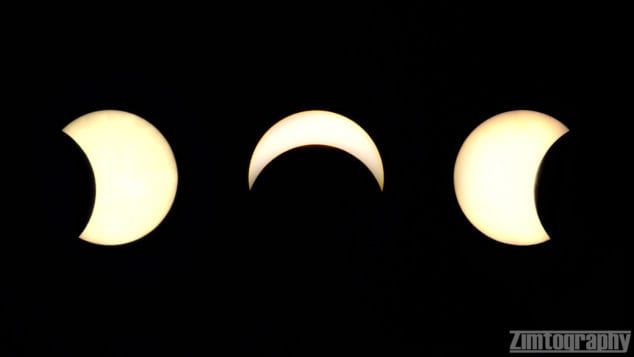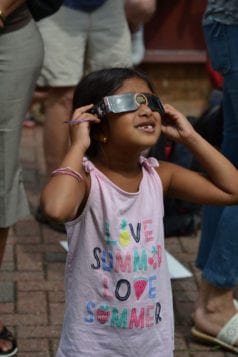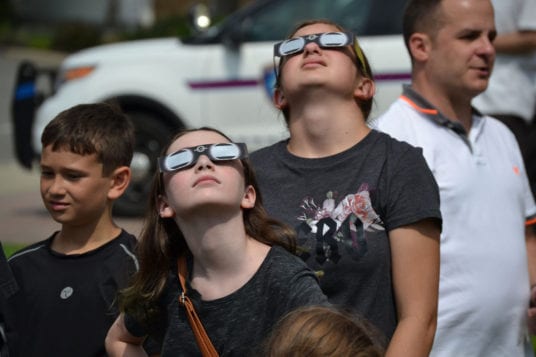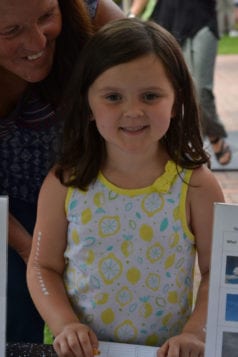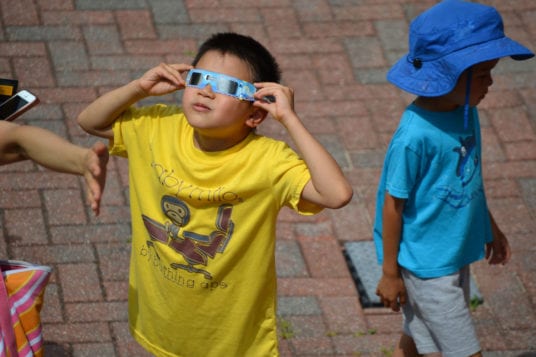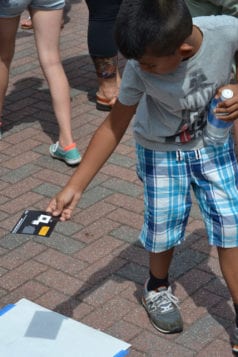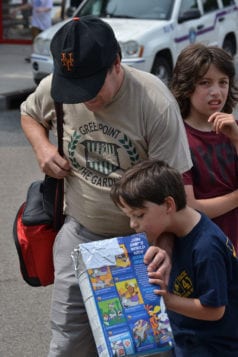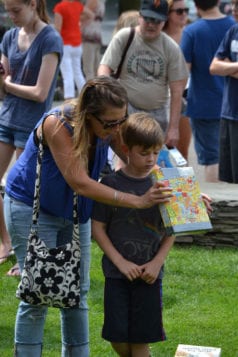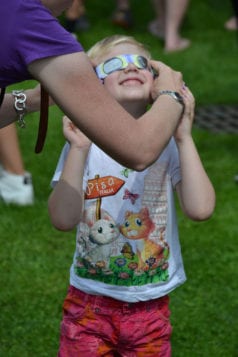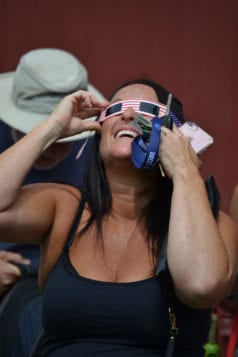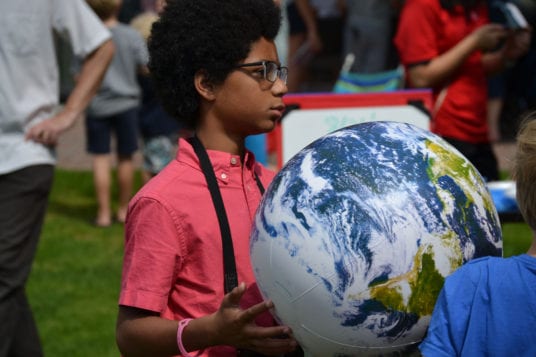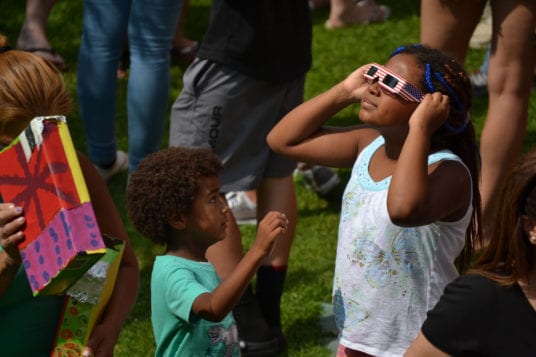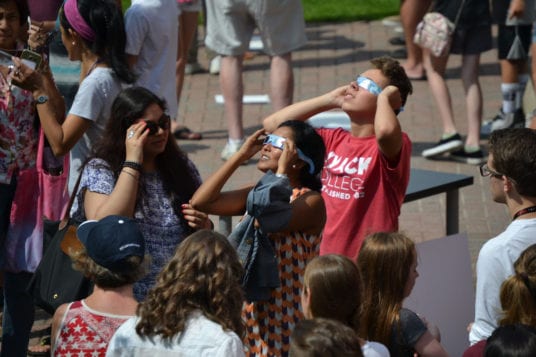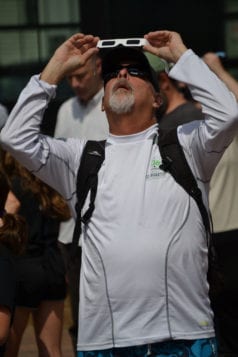By Alex Petroski
Inquiring minds of all ages arrived at the Maritime Explorium in Port Jefferson Aug. 21 to witness an extremely rare total solar eclipse — or Totality 2017 as some are calling it — the likes of which hadn’t happened in North America since the 1970s, or been visible from coast to coast in almost a century. They were greeted not only with the breathtaking once-in-a-lifetime phenomenon, but with another: Hundreds of observers turned citizen journalists helping to accumulate scientific data to be used by researchers across the country, most of whom were barely old enough to ride in the front seat of a car, let alone drive one.
“I’ve heard a lot about it so it’s kind of incredible to be able to look and see it,” said Bella Fantauzzi, an 11-year-old from East Islip who made the trip to Port Jeff’s haven for youngsters interested in science on the historic day with her family. “I don’t know how to describe it. Something like this happens, this event, this widespread — my mom said I’m going to be in my 50s when I see [a countrywide eclipse] this happen again, so that’s incredible.”
The event attracted about 200 guests during the course of the day. Attendees were given eclipse glasses until the supply ran out, though anyone interested in observing the happening was welcome to share with other onlookers. Around the grounds of Harborfront Park outside of the Explorium, representatives from the facility explained the science behind the eclipse and instructed kids on how to assist in the collection of data. The young scientists charted the temperature, percentage of the sky covered by clouds, the color of the sky and the visibility of the sun every five minutes beginning at 2 p.m. until the conclusion of the event. That data was being accumulated for NASA.
Attendees also observed work being done by Neil Heft, the president of the Radio Central Amateur Radio Club, who in accordance with a group called EclipseMob, accumulated radio wave data using cellphones and tablets which were then transmitted to researchers in Colorado as part of a nationwide crowdsourcing data collection effort.
“I think it’s an amazing opportunity for young people to actually be involved in the process of making science, because I think in this climate in this day and age there’s a lot of questions about science, but here they’re witnessing something actually happening,” Angeline Judex, the executive director of the Explorium, said during the event. “We did not expect such a great turnout. It’s really a testament to how much people are interested in what’s going on around them in the environment.”
Heft said he’s not sure how the data might be applied by scientists going forward, but that’s not a unique situation for researchers to be in.
“The last time we had an opportunity to do a test like this was 1925,” he said, adding this event was a golden opportunity because the researchers weren’t as disciplined at the time regarding organization of the data as they should have been back then, in addition to swaths of new technology available now. “I can’t tell you how they’re going to use [the data], your kids will probably know and, if not them, their kids will probably know.”
Terri Randall, a board member at the Explorium and a science teacher, summed up what she hoped attendees, especially kids, would take from participating in the rare event.
“Everybody can be a scientist,” she said. “It’s not isolated to people in museums or in laboratories. So when you have an event like this you have an opportunity to really bring people together to explore, to explain, to learn, to investigate, to have their hands on true science.”
The event achieved its purpose for at least one of the young attendees.
“I’m going to learn about this,” Bella said of the eclipse. “I know I’m going to study it and research it, but I know I’m going to witness it today, so I’m pretty sure when I learn more about it, it will mean a whole lot more later on, but right now I’m kind of just excited to see it.”

